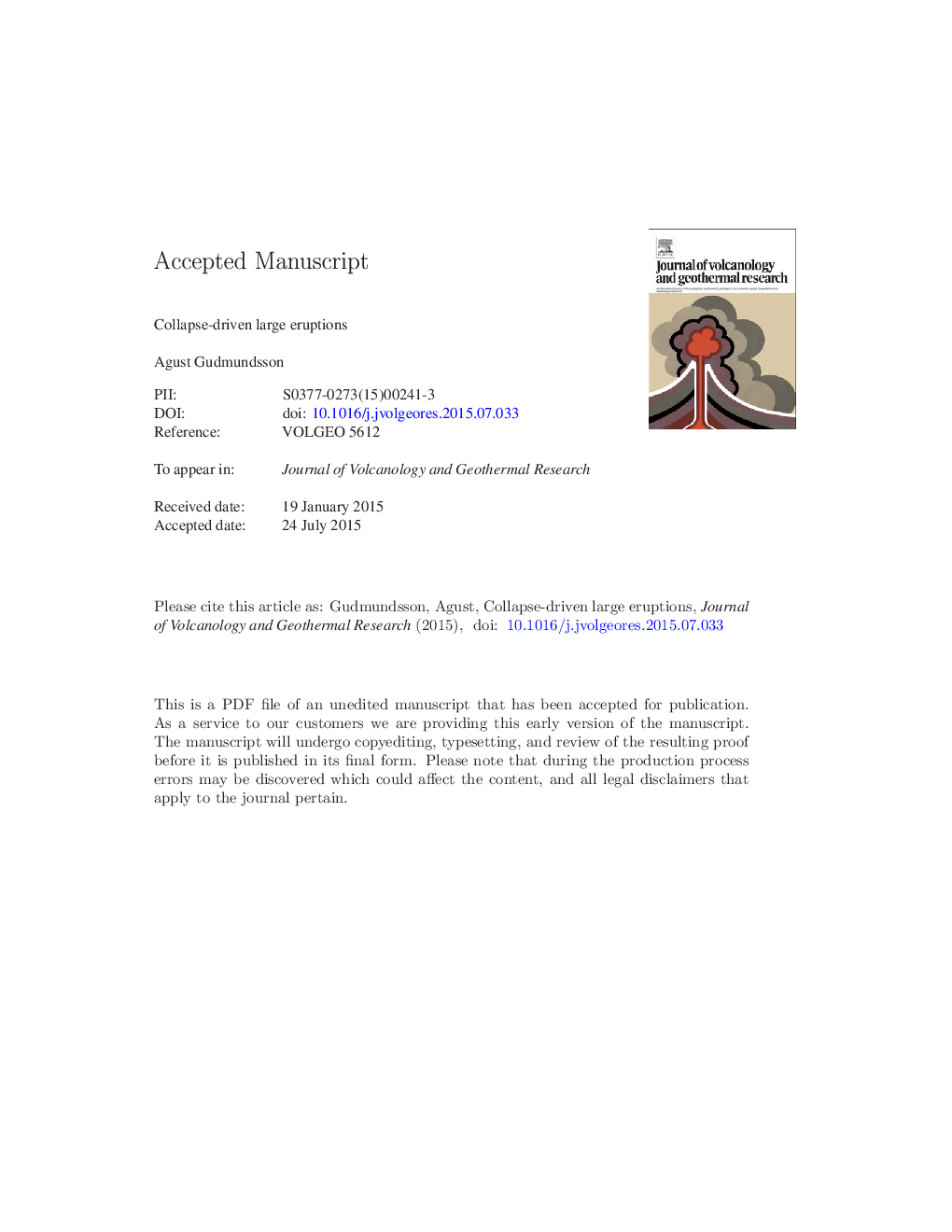| Article ID | Journal | Published Year | Pages | File Type |
|---|---|---|---|---|
| 6439778 | Journal of Volcanology and Geothermal Research | 2015 | 49 Pages |
Abstract
For a typical poroelastic shallow crustal magma chamber, about 0.1% of the mafic magma and about 4% of the felsic magma are erupted and/or injected during magma-chamber rupture. Magma chambers with volumes of the order of several tens to several hundred cubic kilometres, as are common, are thus sufficiently large to supply magma to small or moderate eruptions. For large eruptions, however, a much higher percentage of the magma volume must be squeezed out of the chamber. For an ordinary poroelastic chamber, the excess pressure in the chamber falls exponentially during the eruption. For a large eruption to be possible, however, the excess pressure must be essentially maintained until the very end of the eruption. Here I show that caldera collapse can maintain the excess pressure through forced magma-chamber volume reduction, in which case a resulting large eruption would be the consequence (not the cause) of the collapse. I also show that ring-fault dip partly controls the size and intensity (volumetric flow or effusion rate) of the eruption. If the ring-fault dips inward (a normal fault), the displacement is 'stable', the volumetric flow rate (intensity) remains essentially constant during the collapse, and the magma chamber remains active following the collapse. By contrast, if the ring-fault dips outward (a reverse fault), the displacement is 'unstable', the volumetric flow rate normally increases dramatically during the collapse, and the magma chamber may be entirely destroyed during the collapse.
Related Topics
Physical Sciences and Engineering
Earth and Planetary Sciences
Geochemistry and Petrology
Authors
Agust Gudmundsson,
